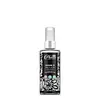What's inside
What's inside
 Key Ingredients
Key Ingredients

 Benefits
Benefits

 Concerns
Concerns

 Ingredients Side-by-side
Ingredients Side-by-side

Water
Skin ConditioningPropanediol
SolventButylene Glycol
HumectantEthoxydiglycol
HumectantGlycerin
HumectantAscorbyl Glucoside
AntioxidantPanthenol
Skin ConditioningSalicylic Acid
MaskingCamellia Sinensis Callus
AntimicrobialGlycyrrhiza Glabra Root Extract
BleachingPotassium Azeloyl Diglycinate
Skin ConditioningCoffea Arabica Fruit Extract
AntioxidantCeramide NP
Skin ConditioningVitis Vinifera Seed Extract
AntimicrobialPanax Ginseng Root Extract
EmollientNiacinamide
SmoothingPhytic Acid
Epigallocatechin Gallate
AntioxidantAdenosine
Skin ConditioningUbiquinone
AntioxidantCalendula Officinalis Flower Extract
MaskingLonicera Caprifolium Flower Extract
PerfumingSodium Hyaluronate
HumectantLecithin
EmollientCentella Asiatica Extract
CleansingSucrose Stearate
EmollientGlycine Soja Seed Extract
Skin ConditioningHydrogenated Lecithin
EmulsifyingCarbomer
Emulsion StabilisingTetrasodium Glutamate Diacetate
Caprylic/Capric Triglyceride
MaskingCaprylyl Glycol
EmollientPolysorbate 20
EmulsifyingPolyglyceryl-10 Stearate
Skin ConditioningHydroxyethylcellulose
Emulsion StabilisingSodium Hydroxide
BufferingEthylhexylglycerin
Skin ConditioningPhenoxyethanol
PreservativeWater, Propanediol, Butylene Glycol, Ethoxydiglycol, Glycerin, Ascorbyl Glucoside, Panthenol, Salicylic Acid, Camellia Sinensis Callus, Glycyrrhiza Glabra Root Extract, Potassium Azeloyl Diglycinate, Coffea Arabica Fruit Extract, Ceramide NP, Vitis Vinifera Seed Extract, Panax Ginseng Root Extract, Niacinamide, Phytic Acid, Epigallocatechin Gallate, Adenosine, Ubiquinone, Calendula Officinalis Flower Extract, Lonicera Caprifolium Flower Extract, Sodium Hyaluronate, Lecithin, Centella Asiatica Extract, Sucrose Stearate, Glycine Soja Seed Extract, Hydrogenated Lecithin, Carbomer, Tetrasodium Glutamate Diacetate, Caprylic/Capric Triglyceride, Caprylyl Glycol, Polysorbate 20, Polyglyceryl-10 Stearate, Hydroxyethylcellulose, Sodium Hydroxide, Ethylhexylglycerin, Phenoxyethanol
 Reviews
Reviews

Ingredients Explained
These ingredients are found in both products.
Ingredients higher up in an ingredient list are typically present in a larger amount.
Ethoxydiglycol is a synthetic solvent.
Solvents are used to keep ingredients together in a product. They can help dissolve ingredients to stable bases or help evenly distribute ingredients throughout the product.
Ethoxydiglycol also helps deliver other key ingredients into the skin.
Learn more about EthoxydiglycolEthylhexylglycerin (we can't pronounce this either) is commonly used as a preservative and skin softener. It is derived from glyceryl.
You might see Ethylhexylglycerin often paired with other preservatives such as phenoxyethanol. Ethylhexylglycerin has been found to increase the effectiveness of these other preservatives.
Hydroxyethylcellulose is used to improve the texture of products. It is created from a chemical reaction involving ethylene oxide and alkali-cellulose. Cellulose is a sugar found in plant cell walls and help give plants structure.
This ingredient helps stabilize products by preventing ingredients from separating. It can also help thicken the texture of a product.
This ingredient can also be found in pill medicines to help our bodies digest other ingredients.
Learn more about HydroxyethylcellulosePanthenol is a common ingredient that helps hydrate and soothe the skin. It is found naturally in our skin and hair.
There are two forms of panthenol: D and L.
D-panthenol is also known as dexpanthenol. Most cosmetics use dexpanthenol or a mixture of D and L-panthenol.
Panthenol is famous due to its ability to go deeper into the skin's layers. Using this ingredient has numerous pros (and no cons):
Like hyaluronic acid, panthenol is a humectant. Humectants are able to bind and hold large amounts of water to keep skin hydrated.
This ingredient works well for wound healing. It works by increasing tissue in the wound and helps close open wounds.
Once oxidized, panthenol converts to pantothenic acid. Panthothenic acid is found in all living cells.
This ingredient is also referred to as pro-vitamin B5.
Learn more about PanthenolPhenoxyethanol is a preservative that has germicide, antimicrobial, and aromatic properties. Studies show that phenoxyethanol can prevent microbial growth. By itself, it has a scent that is similar to that of a rose.
It's often used in formulations along with Caprylyl Glycol to preserve the shelf life of products.
Phytic Acid is a gentle AHA and antioxidant. AHAs are chemical exfoliants that help remove dead skin cells. Phytic Acid has a slight and mild exfoliating effect.
The chemical makeup makes it classified as an AHA, much like lactic acid.
In some cases, it is a chelating agent. Chelating agents help prevent metals from binding to water, helping to stabilize the ingredients in a product.
An interesting fact about phytic acid is that it is considered an antinutrient. People do not have the enzyme needed to properly breakdown and digest phytic acid. When ingested, phytic acid binds to minerals and prevents them from being absorbed.
Read more about some other popular AHA's here:
Learn more about Phytic AcidSodium Hyaluronate is hyaluronic acid's salt form. It is commonly derived from the sodium salt of hyaluronic acid.
Like hyaluronic acid, it is great at holding water and acts as a humectant. This makes it a great skin hydrating ingredient.
Sodium Hyaluronate is naturally occurring in our bodies and is mostly found in eye fluid and joints.
These are some other common types of Hyaluronic Acid:
Learn more about Sodium HyaluronateSodium Hydroxide is also known as lye or caustic soda. It is used to adjust the pH of products; many ingredients require a specific pH to be effective.
In small amounts, sodium hydroxide is considered safe to use. However, large amounts may cause chemical burns due to its high alkaline.
Your skin has a natural pH and acid mantle. This acid mantle helps prevent harmful bacteria from breaking through. The acid mantle also helps keep your skin hydrated.
"Alkaline" refers to a high pH level. A low pH level would be considered acidic.
Learn more about Sodium HydroxideWater. It's the most common cosmetic ingredient of all. You'll usually see it at the top of ingredient lists, meaning that it makes up the largest part of the product.
So why is it so popular? Water most often acts as a solvent - this means that it helps dissolve other ingredients into the formulation.
You'll also recognize water as that liquid we all need to stay alive. If you see this, drink a glass of water. Stay hydrated!
Learn more about Water